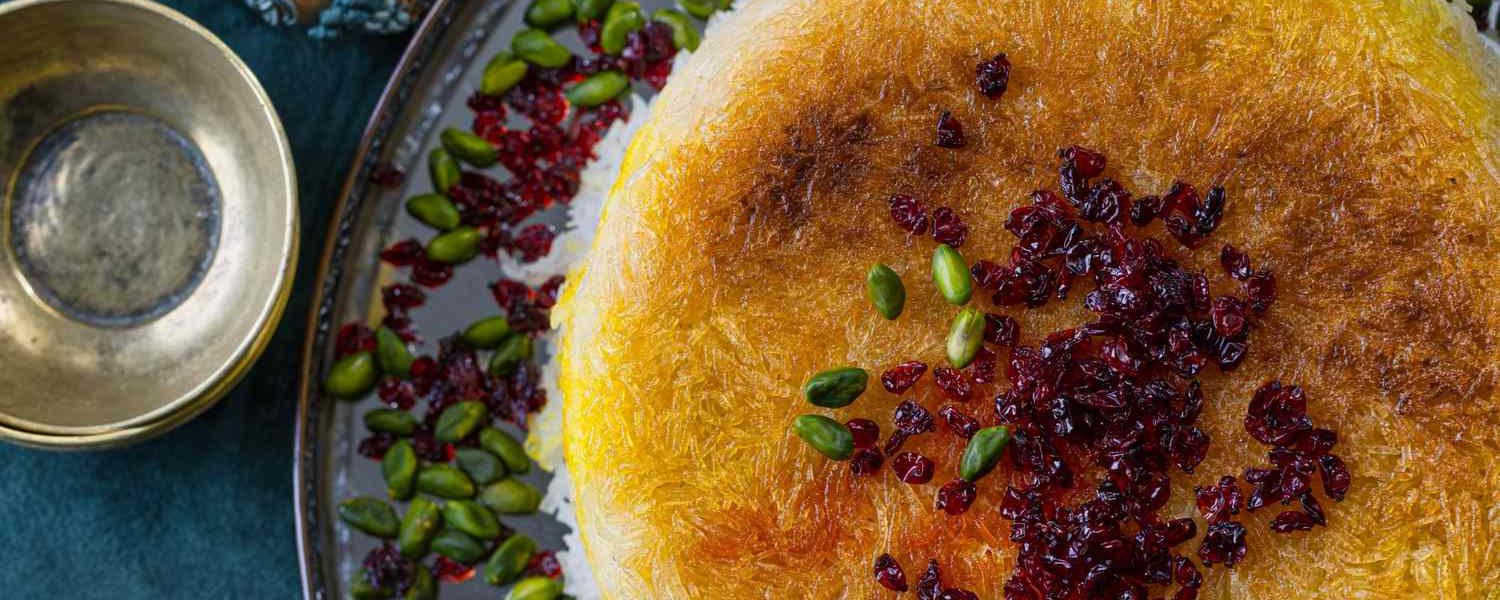
Exploring the Flavors of Persian Cuisine and Most Common Ingredients Used
Persian cuisine, known for its rich and diverse flavors, has a long history dating back thousands of years. The culinary traditions of Iran, formerly known as Persia, have been influenced by various regions, cultures, and ingredients. In this blog, we’ll take a delightful journey through Persian cuisine, exploring the most common and essential ingredients that make it so unique and flavorful.
Rice – The Staple of Persian Cuisine
Rice is at the heart of Persian cuisine and serves as the staple food for most meals. Iranians take great pride in their rice, and it is prepared with meticulous care. The preferred type of rice is long-grain and aromatic, such as basmati. The Persian method of preparing rice, known as “Chelow,” involves washing and soaking the rice, parboiling it, and then cooking it with a crispy layer of saffron-infused rice at the bottom, called “Tahdig.”
Saffron – The Red Gold
Saffron is often referred to as the “red gold” of Persian cuisine. It adds a distinctive flavor, aroma, and vibrant color to dishes. Iranians use saffron in a variety of dishes, including rice, stews, and desserts. The process of infusing saffron in hot water or milk to release its essence is a crucial step in Persian cooking.
Herbs and Greens – A Fresh Twist
Fresh herbs and greens play a prominent role in Persian cuisine, adding depth and freshness to dishes. Herbs like parsley, cilantro, mint, and dill are commonly used as garnishes or as key ingredients in salads, stews, and rice dishes. The popular Persian herb mixture, “Sabzi Khordan,” is a platter of fresh herbs served alongside meals.
Meat – A Protein Powerhouse
Meat, especially lamb and chicken, is a primary source of protein in Persian cuisine. Lamb, known for its tender and flavorful meat, is widely used in kebabs, stews like “Ghormeh Sabzi,” and rice dishes. Chicken is also a popular choice, often marinated in saffron and yogurt before being grilled or used in stews.
Legumes – Nutritious and Hearty
Legumes are a significant component of Persian cuisine, providing both protein and texture to various dishes. Chickpeas, lentils, and beans are commonly used in stews and rice dishes. “Adas Polo,” a Persian rice dish with lentils and raisins, is a delightful example of legume-based cuisine.
Dried Fruits and Nuts – A Sweet and Savory Twist
Dried fruits and nuts are frequently incorporated into Persian dishes, adding both sweetness and texture. Ingredients like dried apricots, prunes, and raisins are used in stews, while almonds, pistachios, and walnuts are often included in rice and meat dishes. This combination of sweet and savory creates a unique balance of flavors.
Pomegranate – A Tangy Delight
Pomegranates are a beloved fruit in Persian cuisine and are used in various forms. Pomegranate molasses, known as “Rob-e Anar,” is a common ingredient, adding a sweet-tart flavor to dishes like “Fesenjan,” a pomegranate and walnut stew. Fresh pomegranate seeds are also sprinkled over salads and rice for a burst of color and taste.
Yogurt – A Creamy Companion
Yogurt is an essential ingredient in Persian cuisine and serves as a base for many sauces and marinades. It adds creaminess and tanginess to dishes like “Mast-o-Khiar,” a yogurt and cucumber salad, or “Joojeh Kebab,” where chicken is marinated in yogurt and saffron for a tender and flavorful result.
Spices and Seasonings – The Flavor Boosters
Persian cuisine uses an array of spices and seasonings to enhance the taste of dishes. Common spices include turmeric, cumin, cinnamon, and cardamom, each contributing to the complex and aromatic flavors. Advieh, a Persian spice blend, is used in various rice dishes and stews.
Rosewater and Orange Blossom Water – Floral Elegance
Persian desserts are known for their delicate and aromatic flavors, often featuring rosewater and orange blossom water. These floral essences are used in sweets like “Golab Jamun” and “Baklava,” imparting a unique and fragrant touch.
Persian cuisine is a treasure trove of flavors, influenced by centuries of history and diverse regions. From the fragrant saffron-infused rice to the aromatic herbs and spices, the cuisine of Iran offers a sensory journey that delights the palate. Whether you’re savoring a hearty lamb stew or indulging in a sweet rosewater-infused dessert, the common ingredients of Persian cuisine come together to create a rich tapestry of taste and tradition that continues to captivate food enthusiasts around the world. Eager to try delightful Persian cuisine? Check out Inferno Charcoal Grill.



